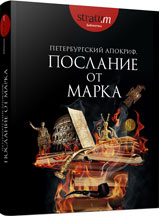
We kindly inform you that, as long as the subject affiliation of our 300.000+ articles is in progress, you might get unsufficient or no results on your third level or second level search. In this case, please broaden your search criteria.


The author examines the current state of studies of the Late Zarubintsi culture dwellings and main ideas about them. He also introduces some new evidence from the South Bug River area and gives a comprehensive overview of dwellings belonging to all local versions of the Late Zarubintsi group of sites. Special focus is set on constructive features of the dwellings. He concludes that the blockhouse construction of walls prevailed and had a continuation on the latest sites of the Kiev culture.
More...
Neck-rings representing a circuited form with cone-shaped terminals are the special rank of Sambian–Natangian Culture. They should be a sort of imitation of the gold Havor group’s ornaments. Such neck-rings appear during the period B2 in association with some other clothes fittings and personal ornaments which are thought to have similarities in Scandinavia. In addition, bronze neck-rings with cone-shaped terminals occur widely across the Balts territory.
More...
A set of horse harness accessories was found in necropolis of the Bosporan polis Gorgippia in 1999. Harness details, first of all bronze snaffles, are analogies of some details of bridle from Sarmatian burials 1st—2nd centuries A.D. of the Kuban and Don region. This find proves the distribution of Sarmatian-like horse equipment in the antique cities of Bosporus State. Its occurrence can be connected with penetration of natives of the Sarmatian tribal environment into Bosporan cities, first of all the Aspurgians.
More...
The article discusses possibilities to prove some genetic links between Wielbark and Chernyakhov cultures. The author argues that this issue can be solved with the help of chronology, by distinguishing early horizones of finds on such representative cemeteries as Dancheny, Kosanovo, Ruzhichanka, Cherniliv Russky and Toki. The findings led to the following conclusions:1. Wielbark culture played a crucial role at the initial stage of the Chernyakhov culture. This manifests in a group of early Wielbark burials in Chernyakhov cemeteries, which forms the initial core of the latter, and in a number of categories of various objects and items of jewelry that existed throughout the Chernyakhov culture.2. The second horizon is marked by ties with the population of the Rhine-Elbe region, where settlements and burial grounds yield large quantities of handmade ware, forms of which are later found throughout the whole area of the Chernyakhov culture in wheel pottery. The same region gave various types of ware of Leuna-Hassleben horison to the Chernyakhov culture.3. The second and third horizons are marked by the Danish Wave: these are Monstruoso fibulae, iron combs, glass beakers, Bügelknopffibeln with a comb. All of these components merged together and transformed during the period C1b—C2, so that we see the classic Chernyakhov culture in the first decades of the 4th century, and it is difficult to single out the roots it stems from.
More...
Amphoras of “Delakeu” type were produced on the outskirts of Sinope. From the middle of 4th century they completely prevail on the southern settlements of the Chernyakhov culture, and they are practically not known in other places. In the autor’s opinion, this is the result of the agreement of Constantine I with Goths dated by AD 332. After the agreement the Sinopean wine in specially made big amphoras and other goods began to come in large quantities to the Chernyakhov territory by trade and as component of compensation for federates’ detachments.
More...
The paper publishes a hoard of Roman coins found accidentally in 2005 near Moshny village (Cherkassy administrative area, Ukraine). Apart from one coin of Mithridates VI, the hoard consists of coins of the period from Constantius II to sons of Theodosius I, basically of AD 383—388, of the same nominal value (AE2) and mainly copper, which is unusual for the area of the Chernyakhov culture. The authors think that the hoard of Moshny tells about involving of Gothic foederati into active coin circulation in the Roman Taurica.
More...
The article examines connections between the population of the Upper Don and the Northern Black Sea regions in 5th century A. D. Black Sea region traditions are represented in the Upper Don by the Late Antique and barbarous cultural elements. On the Upper Don settlements, wheel-made pottery and products of ferrous metal were produced using Late Antique technology. In this region, 3 burials associated with Black Sea region by grave goods and details of funeral rite were studied. A small series of Upper Don hand-made polished vessels is of Late Antique Tanais origin. Some ornaments (earrings, fibulae of different types, bracelets) find analogies in the Lower Don, Crimea and Northern Caucasus. Tanais traditions are represented by a stone house built on the hillfort Chertovitskoje-3. All these data testify the presence of a population from the Northern Black Sea region in the Upper Don in 5th century A. D. This population enabled operation of the trade route from the Azov Sea by the Don River to the Oka region.
More...
The author examines the history of studies of the fibulae of Udine-Planis type, and distinguishes series of such fibulae. The Italo-Germanic series (ca. 490—530 s.) was related to the Ostrogothic kingdom in Italy. The Balkan-Pontic series was shaped under the influence of the Ostrogothic samples; after 530-s. an important production centre developed in Bosporus. The Danube-Dnieper series (ca. 6th c.) was formed in the Lower Danube area; this and the Middle Dnieper area have evidences of local production.
More...
Cam, keşfinden günümüze kadar, farklı şekillerde ve değişik amaçlarla insan hayatında varlık göstermiştir. Arkeolojik veriler, camın M.Ö. III. binin sonlarına doğru, Mezopotamya’da, boncuklarda, fayanslarda, seramik gibi nesnelerde kullanılmış olan sır üretimi sonucunda keşfedildiğini ortaya koymaktadır (Mehlman, 1982, s.30). Camın üretimi ile ilgili formüllerin ilk yazılı kaynakları arasında, M.Ö. II. ve I. bine ait Mezopotamya’da bulunmuş olan çivi yazılı tabletler yer almaktadır. Oppenheim’in tabletler üzerine yapmış olduğu araştırmalara göre Sümerce “anzah”, Akadca “anzahhu” kelimeleri ve Mısır’da da “ehlipakku” ve “mekku” kelimeleri “cam” anlamına gelmektedir (Oppenheim, 1970, ss.2-104; Oppenheim, 1973).
More...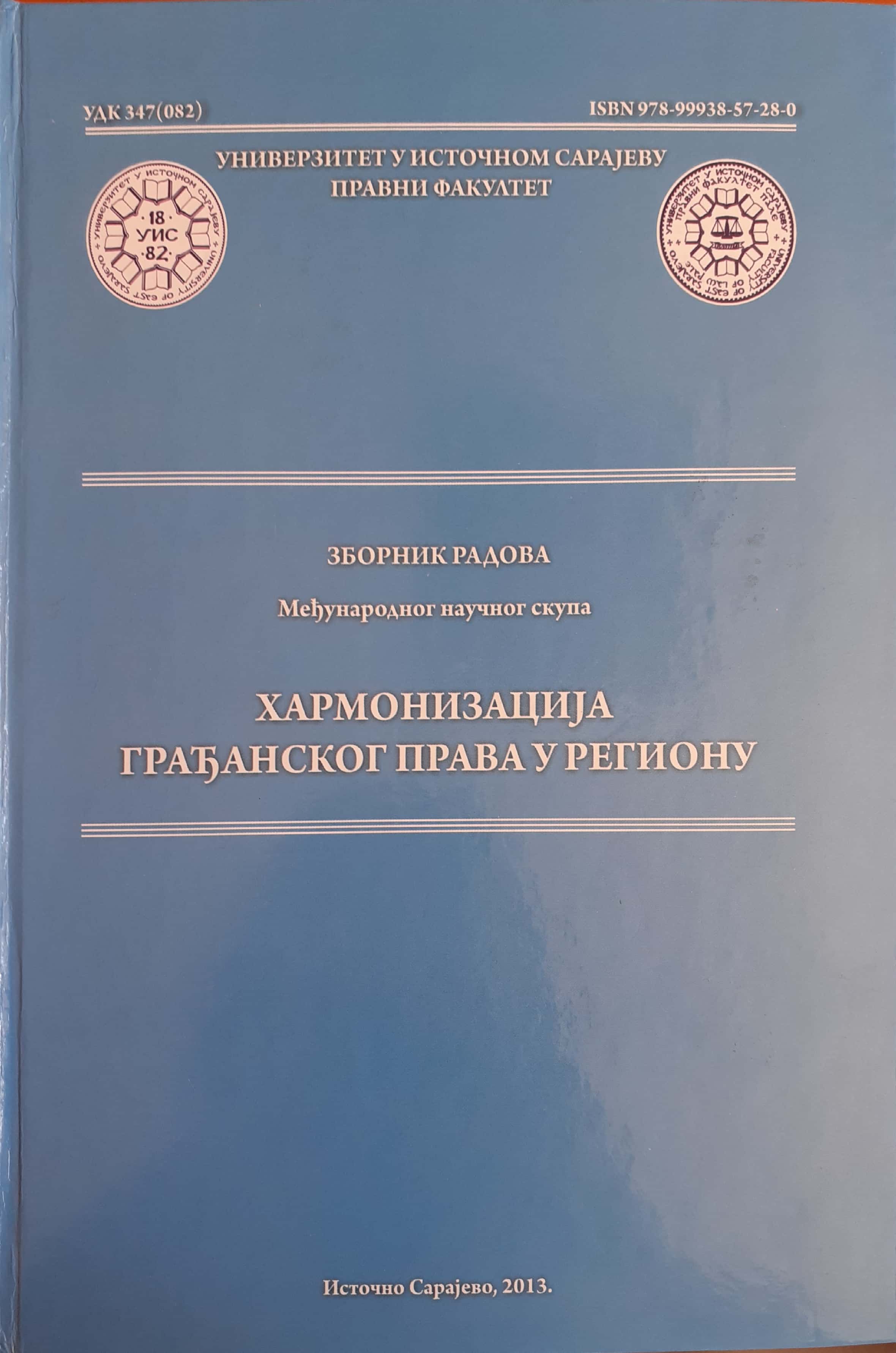
According to the opinion of Roman lawyers, depositum was a contract in which a depositor gave a res to a depositee to be kept without renumeration and to be returned on demand. Special cases of depositum were: depositum sequestre, depositum necessarium or depositum miserabile and depositum irregulare. Byzantine law pays a special attention to the contract of depositum. Ecloga contains chapter XI referring to the depositum, entitled Περί πάσης παραθήκης. Chapter XVIII of Procheiron entitled Περί καταθήκης, contains fourteen rules concerning the depositum, and the chapter XXV from Epanagoge, with the same title, contains sixteen fragments on the same topic. However, Matthew Blastares in his Syntagma canonum incorporated only two fragments referring to the depositum, taken from the Procheiron, in a short chapter under the title Περί παρακάταθήκης: 1) the general definition of depositum, and 2) the law on responsibility of a depositee for a loss of a thing in case of vis maior, culpa or neglegentia.The contract of depositum was mentioned in medieval Serbia mostly in the translations of Byzantine legal miscellanies, while Serbian legal sources mention it very rarely.In chapter 48 of the Nomokanon of Saint Sava, entitled Selection of laws that God gave to Moses, we find a short title On depositum (O poklade). Much more important is chapter 55 in which Saint Sava has adopted the complete text of the Procheiron. Title XVIII On depositum (O pokladeži) contains fourteen fragments translated from the Procheiron. The Serbian redactors of the complete Syntagma of Matthew Blastares omitted nothing from the original Greek text. However, they added one more provision which increased the responsibility of the depositee. Serbian legal sources mention the contract of depositum especially in the relationships between the citizens of Serbia and the small City-Republic of Ragusa (Dubrovnik). The remaining documents were written either in Latin or in the old Serbian language.In the documents, written in the old Serbian language, besides the word poklad, used in the translations of Byzantine legal miscellanies, we can find, for depositum, the nouns postava and pohrana as well as the verb postaviti. The most important document, treating the depositum, is a very long list of deposited objects, left by Serbian Despot Đurađ Branković to be kept by the Ragusans (1441, January 25). The list was made by Ragusan notaries.
More...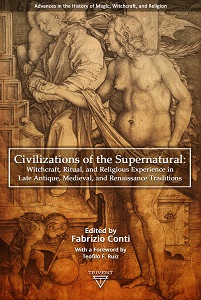
For the Roman author Claudius Aelianus (Aelian, ca. 175–235 CE), intercourse is not a simple issue for animals. In his book On Animals, Aelian introduces the tortoise as follows: “Tortoises are the most lustful land animals but the males only, the females do not willingly mate.” Luckily, nature offers a solution to this dilemma. Male tortoises, Aelian states, use a plant to stimulate an appetite for sex in reluctant female tortoises. Christopher Faraone, in a sophisticated analysis of the anecdote, considers it evidence of “love magic.” He connects the anecdote with much earlier Greek rites via their standard classification in this category. Ancient Greek love magic includes agape-inducing formulas/rites used by men to turn women into passionate lovers and philia-inducing formulas/rites used by women to attract men. The category “love magic” is widely used to evaluate and classify rites, adopted recently by Radcliffe Edmonds. Evidence includes the use of lead tablets with cursing formula (fourth century B.C.E.), rites related to intercourse or sexuality found in the Greek papyri (first-fourth centuries C.E.), and numerous Greek and Roman literary anecdotes about goddesses or women who poison or attempt to poison men for marital or love interests.
More...
The Dodekaoros is an astrological system based on twelve symbolic animals, each one representing a form of the Sun when approaching a particular constellation and zodiacal sign. This system was used for horoscopes. Its origin has no certain chronology and is known from the late Hellenistic Age thanks to the Babylonian astrologist Teukros. Nevertheless, the system was probably older and seems to be rooted in the Egyptian speculations about the different forms of the Sun God. Its use in some magical papyri and gems is studied here by taking also new data into account. In particular, we will review the Papyri Graeca Magica (thereafter PGM) IV, 1644-1649, XXXVIII, 1-26, reporting the Dodekaoros with an orientation (with the cat in S-E), and III, 500-535, where καν[θάρου should be read and not καμ[μάρου. Two features will prove particularly useful in our research: the orientation of the system and the nocturnal part of the animal series. Several animal forms of the Dodekaoros also appear on magical gems, where they are placed in the cardinal points. In PGM II, 103-40 and on a magical gem, the Sun has 4 four forms in the different quarters of the sky and – this system can be understood only if we remember that these forms depend on the Dodekaoros and if we place one half the forms beneath the Earth, during the night; moreover, in PGM VIII, 6-11 four animals of the Dodekaoros are displaced into the four cardinal points. Some series of magical gems represent five animal forms of the Dodekaoros repeated thrice in order to depict the lower, the middle, and the upper parts of the world. These iconographies were aimed to represent the solar god in his variety of forms with his related influences over the world. This chapter will first study the meaning of the Dodekaoros, then its descriptions in magical papyri with or without orientation, and finally it will analyze several magical gems.
More...
This chapter analyses the self-styling of Porphyry and Iamblichus as Priestly-Philosophers and divine theurgists who were competing against the ritualists of the so-called magical papyri. Using an anthropological perspective and a close reading of the relevant texts, this study establishes that knowledge of daimones was unequivocally tied up in the production and negotiation of power relations in late antiquity. This chapter will demonstrate the striking similarities between Neoplatonic daimonic theories and the magical papyri. This chapter is also the first serious attempt at looking at the practical aspects of late antique demonology in pagan writers.
More...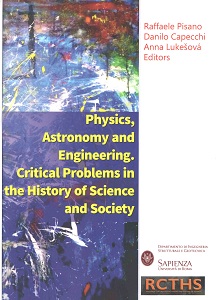
According to Aristotle, Anaximander of Miletus explained the motionless position of the Earth in the universe by appealing to the principle of equilibrium. This study shows that such a conception would have represented a radical departure from the Ionian tradition, which tended to stress the role of air in supporting the Earth. Moreover, given the cosmological role of air, it is possible that this element played the same role also in Anaximander’s thought. Aristotle’s argument is in fact most likely based on Anaximander’s notion of concentric circles of heavenly bodies around the Earth.
More...
The works of Ktesibios, Philo and Hero show that the use of abstract principles for technical purposes had been widely practiced in the Alexandrian Museum and Library since the 3rd c. BC. This paper explores the political, religious and ideological issues of these practices, especially their relationship to the process of the divinisation of kings, which started during this period. The eminent role of applied science, which was perceived as an extension and a proof of the rulers’ divine power, explains why the transgression of the opposition between theoretical research and mechanics was overcome in the realm of court engineering.
More...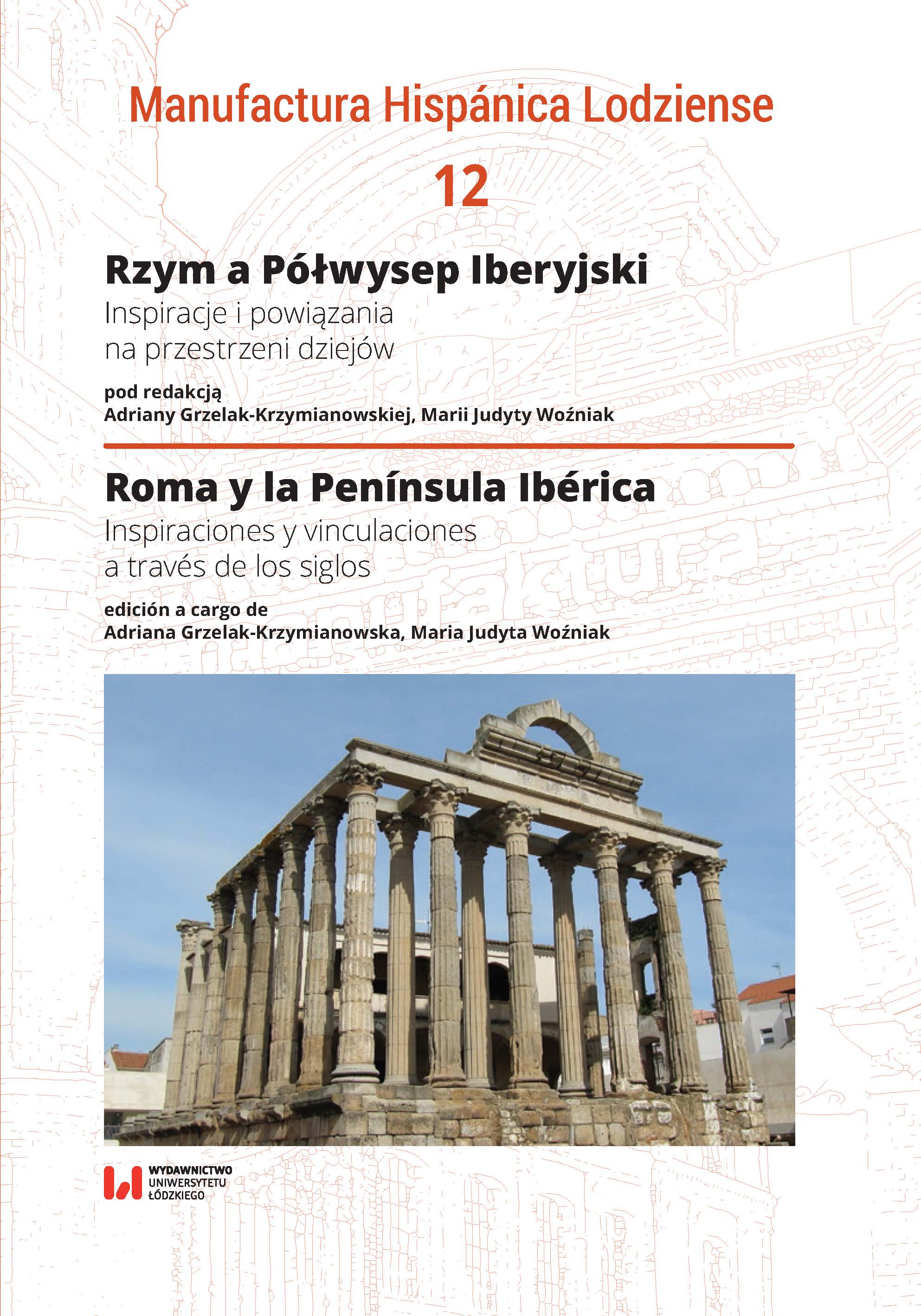

For many years I have dedicated myself to the study of commercial contacts between the Roman provinces, based on research on amphorae. The knowledge of the production of the amphorae of Baetica and the deposits of the amphorae of Galia Cisalpina made it possible to draw conclusions about commercial contacts between these provinces. The aim of my new study of amphorae from Mazarrón Bay (Murcia), funded by the NCN – National Science Centre in Poland, arose from my previous research. Thanks to the collaboration of the University of Murcia, the Archaeological Museum of Murcia and the Municipal Archaeological Museum of the “Factoría Romana de Salazones” of Mazarrón, I was able to document the hitherto unpublished amphorae of the Mazarrón coast. During the process of documenting 574 amphorae, excavated in the dredging works in Puerto de Mazarrón, in the stores of the Museum of Murcia and the Museum of Mazarrón, I registered 169 containers coming from the production of the south coast of the region of Murcia. The typological and chronological elaboration, as well as the comparison with the finds of amphorae in the interior of the Mazarrón area, allow conclusions to be drawn about the local production and imports of containers from other regions of the Iberian Peninsula and from other Mediterranean areas. The study, based on pieces of material culture, allows the reconstruction of the role of Mazarrón Bay in the ancient trade of the peninsular southeast and other Mediterranean areas.
More...
The quantities of Baetican amphorae Dressel 20 found in the Middle Imperial contexts (2nd–early 3rd centuries AD) discovered during the excavations in the so-called ‘Terme di Elagabalo’ in Rome are added to those discovered in other excavations carried out in Rome (outside Monte Testaccio) and Ostia in order to ponder over their presence in the two cities during this chronological period. Ancient sources and studies are also analysed so as to better understand this commodity, leading to a reflection upon the supply system to the Capital and the strategies of Emperors to improve it.
More...
The beginnings of the imperial cult in Hispania are connected with the reign of Augustus. According to Quintilian, an altar dedicated to him was erected in Tarraco (Hispania Citerior) when the emperor was still alive. After the death of the Emperor, on the 17th September AD 14 when he was deified and given the title of Divus Augustus, the inhabitants of Tarraco decided to dedicate a temple to him. Less than a year later, they asked Tiberius for permission to build it. The image of the temple on the coins of Tiberius, as well as the archaeological remains, excavated at the highest point of the city (on the site of the present cathedral), testify to the fact that the plan was realised. Shortly afterwards, the imperial cult spread to other provinces of Hispania (Ulterior Baetica, Ulterior Lusitania), and temples dedicated to the emperor decorated city forums in other cities, especially the provincial capitals. The example of Tarraco was followed by Emerita Augusta, where the so-called Temple of Diana was erected in the city forum and the Temple of Augustus in the provincial forum. As recent archaeological research shows, in Colonia Patricia Corduba, in the 1st half of the 1st century, a temple in honour of the emperor was also built in the provincial forum, and in the 50s of the 1st century – another one in the city forum.
More...